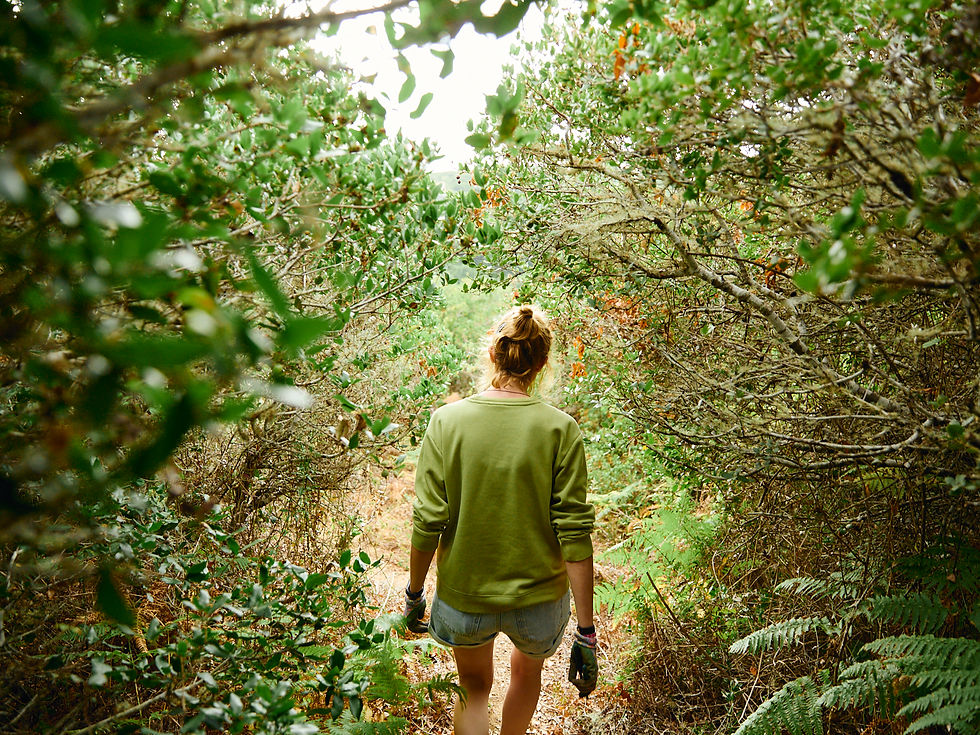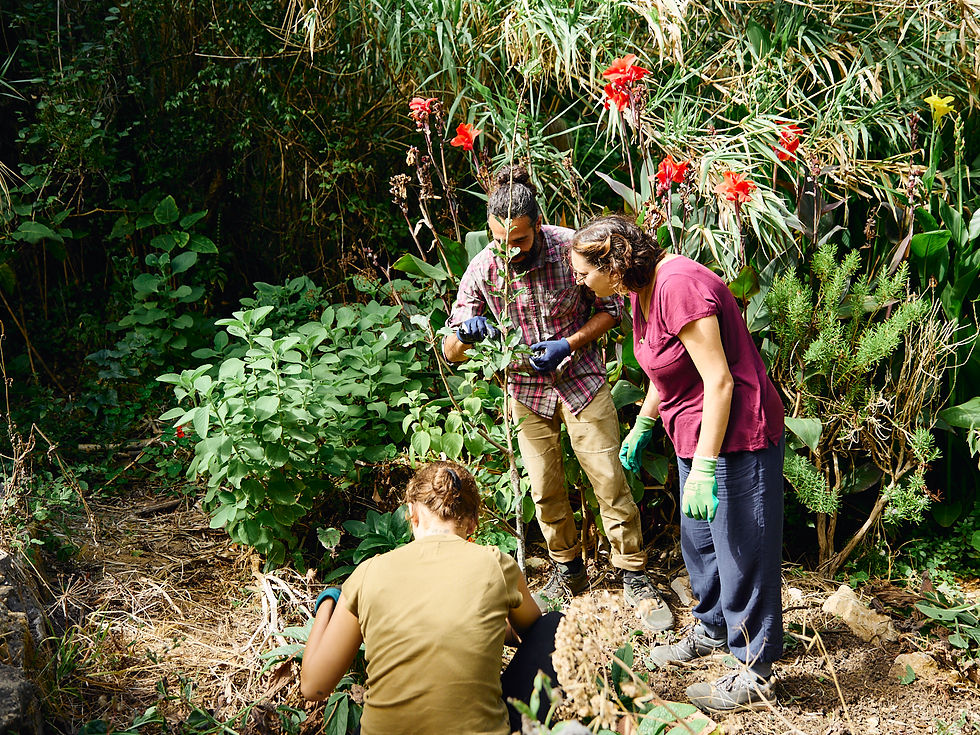Forest Gardening at Terra Alta, A Living Classroom
- Jenny Ready

- Oct 19
- 3 min read

Walking through the forest gardens of Terra Alta Permaculture Education Centre in Sintra, Portugal, you’re not just seeing trees and plants, you’re witnessing 15 years of regeneration, care, and collaboration between human and the more than human.
From Abandoned Land to Living Ecosystem
Rewind to 2010, the year this land found new stewards in Pedro and his family. The land had clearly been abandoned for some time, the soil was degraded and compacted.
Still there was a sense of protection provided by nature, created both by the invisibility of the land and the vegetation covering it. Blackberries were particularly present, doing their job of keeping humans away as well as attracting animals to come and spread seeds in an act of natural reforestation. At this point, pioneer species such as cork oak were growing quickly, reaching up to find sunlight within all the dense vegetation and thereby creating the forest canopy.
Designing Access and Foundations
The first priority was to create access into and around the land. Friends joined to clear the brambles while preserving the trees that were struggling to grow as well as those that were already established, creating a natural basemap of what will later become a thriving forest garden. Chopping and dropping was a great way to use the organic matter that had been cut down to decompose and build soil.
The land is on a slope, so in order to create tree guilds, earth works had to be done to create terraces and swales. It was important to observe the land over time and create sun analysis throughout the seasons to better understand the land and know which species want to be planted where. These early steps marked the beginning of a long process of ecological restoration and regenerative design.

Planting Tree Guilds and Building Relationship
Over time tree guilds were planted using permaculture principles, the seven layers of a forest garden design and companion planting, making sure to incorporate already existing trees such as cork oaks, peach, and strawberry trees and eventually planting fruit trees such as custard apple, avocado, apple, apricot, kaki and quince. To support the thriving of each tree guild, various plants are added over time. Each of the selected plants in each guild are chosen due to their guild layer and function, making sure to have multiple functions within each guild such as:
pollinator attractors
dynamic accumulators
weed suppressors
pest deterrents
living mulch
Together, these species create a self-regulating ecosystem of regenerative design.
Ongoing Stewardship & Education Through Practice
Land stewardship in Mediterranean climates like Portugal means constant awareness of wildfires, making sure to regularly cut back brambles and other easily flammable vegetation as well as integrating firebelts in form of succulents and other less flammable species such as cork oaks into our forest garden design.

Throughout the 15 years of stewarding this land, Terra Alta Permaculture Education Centre has been created. Offering multiple permaculture design courses (PDCs) every year and welcoming over 150 students and around 50 crew members each course season. Our Permaculture Design Courses are designed to give students the possibility to learn by doing, offering 50% theory and 50% practical hands-on learning. This means that every summer the forest garden receives a lot of love from a lot of caring, helping hands. Students learn to maintain a forest garden through pruning, mulching, planting and connecting with the already existing species through our Forest Garden Game. This is an interactive, joyful board game the team at Terra Alta designed in order for students to get to know the different plants growing in our forests as well as their ideal sun, soil and humidity levels and their medicinal and culinary uses.
Cultivating Regeneration and Community
Forest gardening teaches:
reciprocity, patience
belonging
trust in natural cycles
cultivating regeneration through relationship
So here’s to many more years of nurturing this land, building soil, and growing forests and communities!
Interested in learning more?
Join us for a Permaculture Design Course in 2026 and become part of the regeneration story. All photos in thie blog post were taken by Anjou Vartmann




Comments